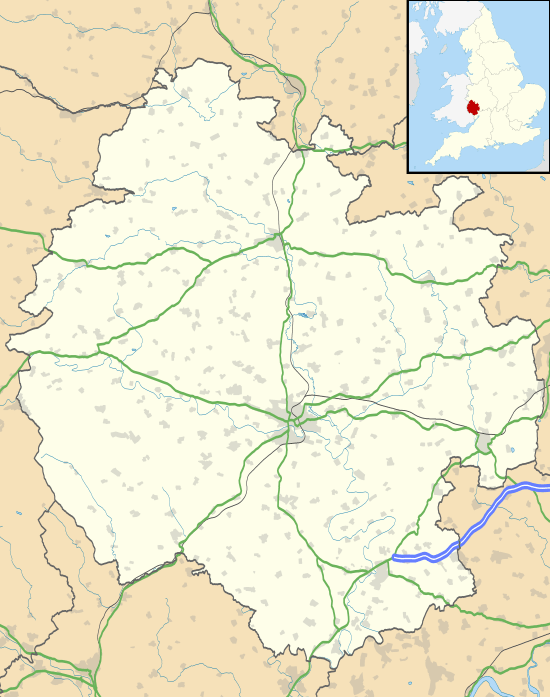St John the Baptist's Church, Llanrothal
St John the Baptist's Church is a redundant Anglican church in Llanrothal, Herefordshire, England. It is recorded in the National Heritage List for England as a designated Grade II* listed building,[1] and is under the care of the Churches Conservation Trust.[2] It stands in a remote position close to the Wales–England border overlooking the River Monnow.[2]
| St John the Baptist's Church, Llanrothal | |
|---|---|
St John the Baptist's Church, Llanrothal, from the northwest | |
 St John the Baptist's Church, Llanrothal Location in Herefordshire | |
| 51.8633°N 2.7701°W | |
| OS grid reference | SO 470 185 |
| Location | Llanrothal, Herefordshire |
| Country | England |
| Denomination | Anglican |
| Website | Churches Conservation Trust |
| History | |
| Dedication | John the Baptist |
| Architecture | |
| Functional status | Redundant |
| Heritage designation | Grade II* |
| Designated | 25 February 1966 |
| Architectural type | Church |
| Style | Norman. Gothic |
History
The church dates from the 12th and 13th centuries. During the 20th century the chancel and vestry were restored.[1] The church was vested in the Churches Conservation Trust on 1 April 1985.[3]
It has been suggested that the church was founded by the Celtic Saint Ridol (or Ryddol) and was re-dedicated to St John the Baptist only in the Norman period.[4] The church has been described as "one of the most isolated churches in Herefordshire" and is approached by a grassed track across two fields.[5] It lies a few hundred yards from the river.
Architecture
The exterior of the church has been rendered. Its plan is simple, consisting of a nave and a chancel, with a north porch, which was previously a vestry. In the north wall of the nave is a Norman round-headed window from the 12th century, and a window from the 13th century with a trefoil head. There are two windows similar to the latter in the south wall. In the south wall of the chancel is a large four-light window. The east window has two lights, with a circular window above. Inside the church is a 17th-century panelled pulpit, and a brass chandelier which was donated by Ivor Bulmer-Thomas.[1]
The font is a simple bowl on a narrow pedestal dating from the Norman period. It is decorated with a cross pattée, although there is no known association with the Knights Templar.[4] The altar is simple and consists of a stone slab resting on two blocks of stone.[4]

References
- Historic England, "Church of St John Baptist, Llanrothal (1348962)", National Heritage List for England, retrieved 19 December 2013
- Church of St John the Baptist, Llanrothal, Herefordshire, Churches Conservation Trust, retrieved 29 March 2011
- Diocese of Hereford: All Schemes (PDF), Church Commissioners/Statistics, Church of England, 2011, p. 3, retrieved 11 April 2011
- Ross, David, Llanrothal church, Britain Express, retrieved 19 December 2013
- "St John the Baptist, Llanrothal, Herefordshire" at churchcrawler.blogspot.co.uk
External links
| Wikimedia Commons has media related to Saint John the Baptist (Llanrothal). |